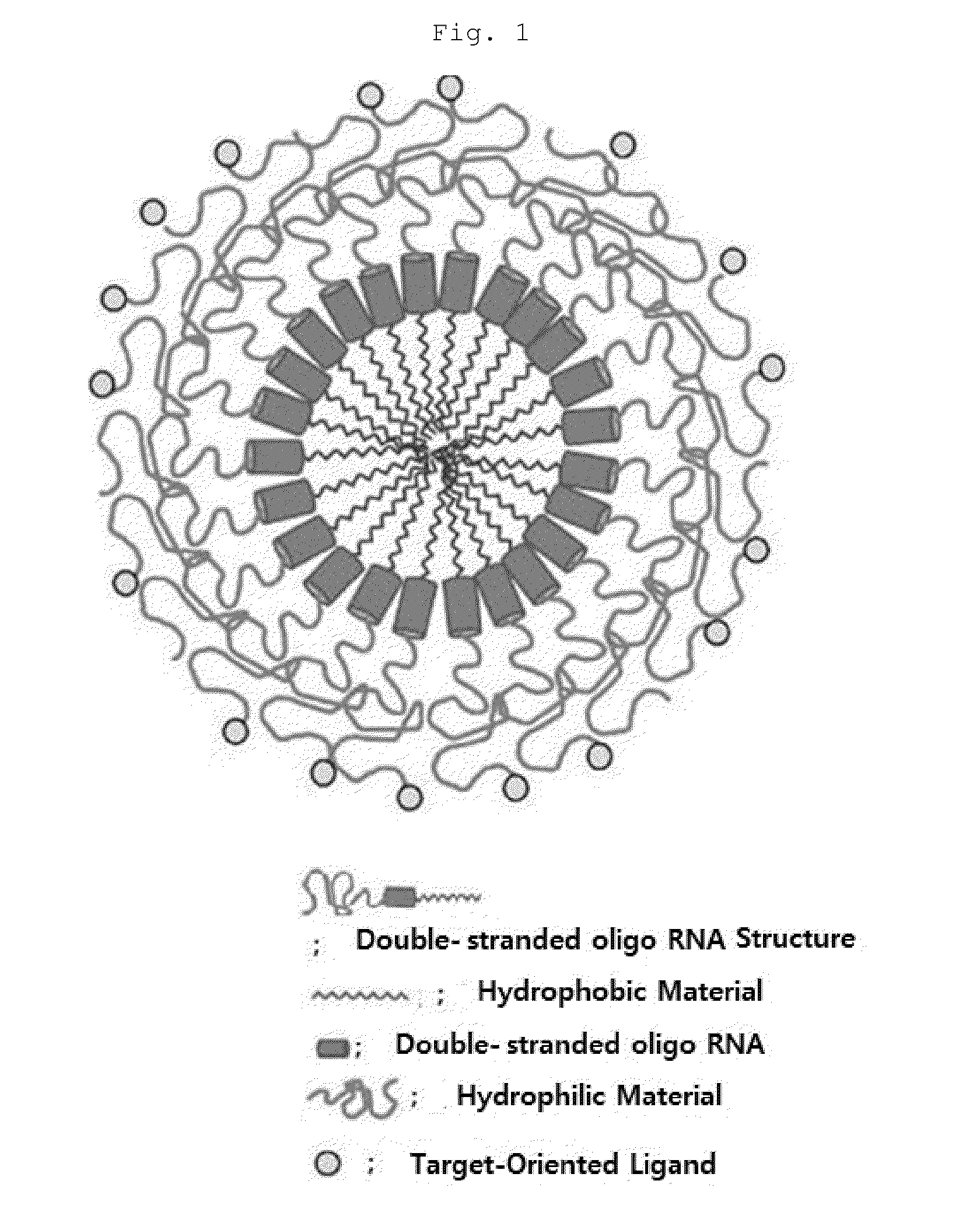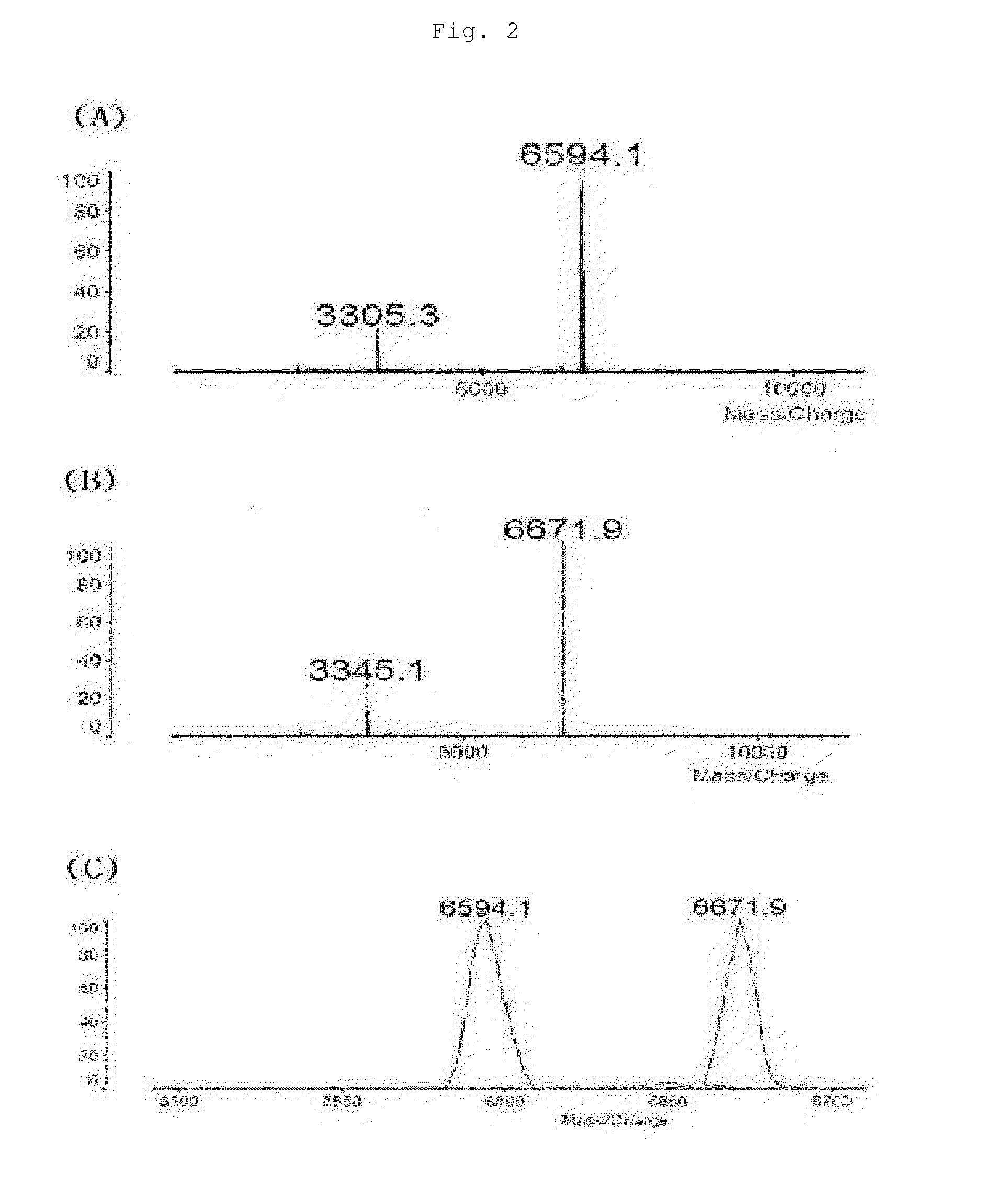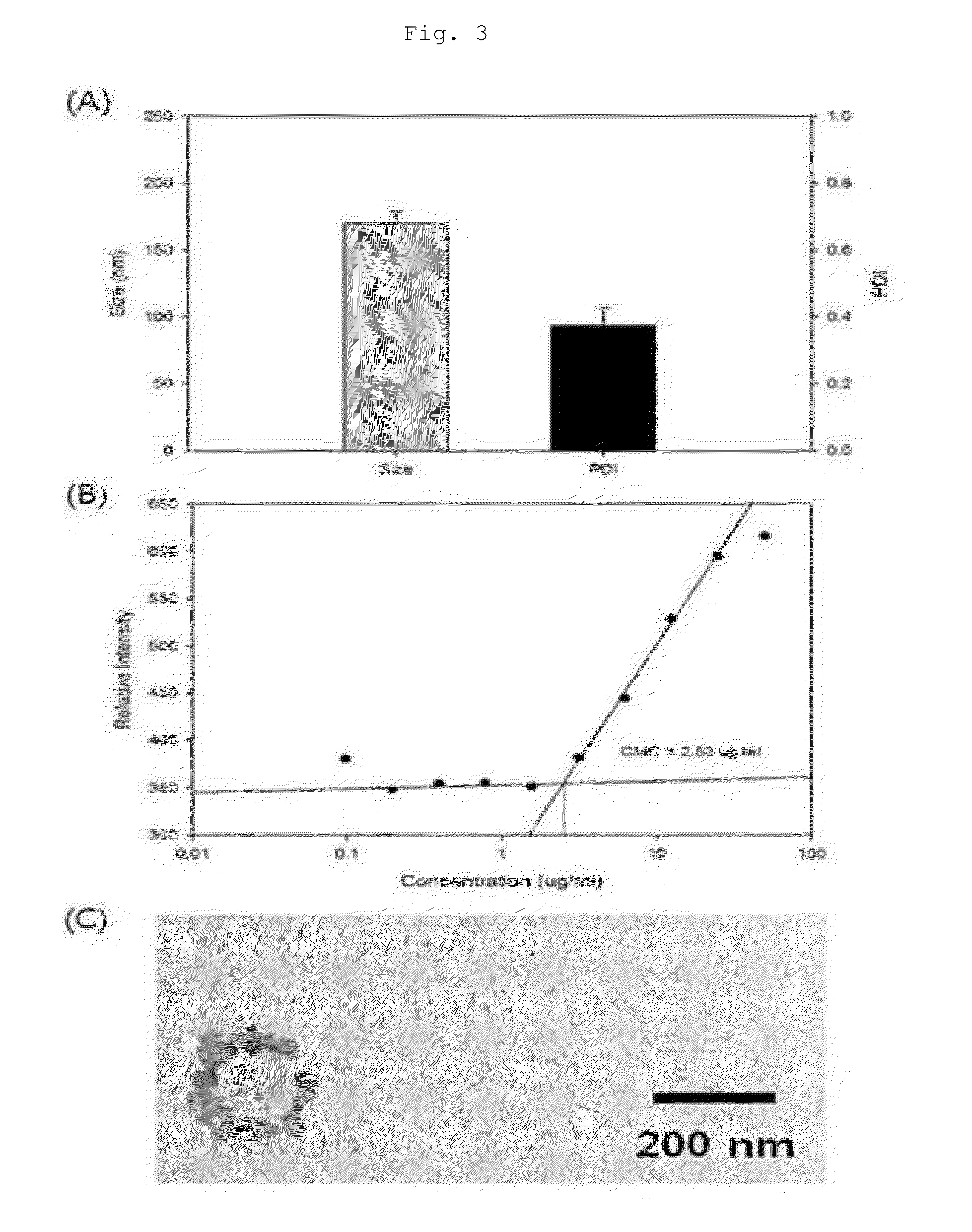High-efficiency nanoparticle-type double-helical oligo-rna structure and method for preparing same
a double-helical, high-efficiency technology, applied in the direction of organic chemistry, biochemistry apparatus and processes, drug compositions, etc., can solve the problems of difficult to be delivered into the cell through a simple diffusion, difficult to be delivered into the cell, and low stability in vivo
- Summary
- Abstract
- Description
- Claims
- Application Information
AI Technical Summary
Benefits of technology
Problems solved by technology
Method used
Image
Examples
example 2
Analysis of Physical Property of Nanoparticle (SAMiRNA) Consisting of SAMiRNALP
[0121]S-SAMiRNALP and S-SAMiRNALP-PO4 forms a nanoparticle, that is, micelle, by a hydrophobic interaction between the hydrophobic materials bound to the end of the double-stranded oligo RNA (see FIG. 1).
[0122]Formation of the nanoparticle (SAMiRNA) consisting of the corresponding SAMiRNALP was confirmed by analysis of nanoparticle size, critical micelle concentration (CMC) and Transmission Electron Microscope (TEM) of the S-SAMiRNALP prepared by Example 1 above.
example 2-1
Measurement of Particle Size and Polydispersity Index (PDI) of Nanoparticle Consisting of SAMiRNALP
[0123]A size of the nanoparticle was measured by zeta-potential measurement. In detail, the SAMiRNALP was dissolved into 1.5 ml of Dulbecco's phosphate buffered saline (DPBS) so as to have a concentration of 50 μg / ml and then treated by a ultrasonic homogenizer (Wiseclean, DAIHAN, Korea) so that a size of nanoparticle is homogenized (700 W; amplitude: 20%). A size of the homogenized nanoparticle was measured by zeta-potential measurement (Nano-ZS, MALVERN, England) under conditions in which a refractive index to the material is 1.459, an absorption index is 0.001, a temperature of a solvent: PBS is 25° C. and the corresponding viscosity and refractive index are 1.0200 and 1.335, respectively. Once measurement was conducted by a size measurement including 20 times repeats and then repeated three times.
[0124]It was confirmed that the nanoparticle consisting of S-SAMiRNALP had a size of a...
example 2-2
Measurement of Critical Micelle Concentration (CMC) of Nanoparticle Consisting of SAMiRNALP
[0125]An amphiphile containing both of hydrophobic materials and hydrophilic materials in a single molecule may be a surfactant, wherein when the surfactant is dissolved into an aqueous solution, the hydrophobic groups thereof move toward the center portion to prevent water contact and the hydrophilic groups thereof moves toward the outside to form micelle. Here, a concentration at which the micelle is initially formed is referred to as a critical micelle concentration (CMC). A method of measuring CMC using fluorescent pigment is based on property of the fluorescent pigment in which the slope of the graph curve of the fluorescence intensity is rapidly changed before / after the micelle is formed.
[0126]In order to measure CMC of the nanoparticle consisting of S-SAMiRNALP, 0.04 mM DPH (1,6-Diphenyl-1,3,5-hexatriene, SIGMA, USA) was prepared as the fluorescent pigment. 1 nmole / μl of S-SAMiRNALP was...
PUM
| Property | Measurement | Unit |
|---|---|---|
| Molecular weight | aaaaa | aaaaa |
| Hydrophilicity | aaaaa | aaaaa |
| Hydrophobicity | aaaaa | aaaaa |
Abstract
Description
Claims
Application Information
 Login to View More
Login to View More - R&D
- Intellectual Property
- Life Sciences
- Materials
- Tech Scout
- Unparalleled Data Quality
- Higher Quality Content
- 60% Fewer Hallucinations
Browse by: Latest US Patents, China's latest patents, Technical Efficacy Thesaurus, Application Domain, Technology Topic, Popular Technical Reports.
© 2025 PatSnap. All rights reserved.Legal|Privacy policy|Modern Slavery Act Transparency Statement|Sitemap|About US| Contact US: help@patsnap.com



